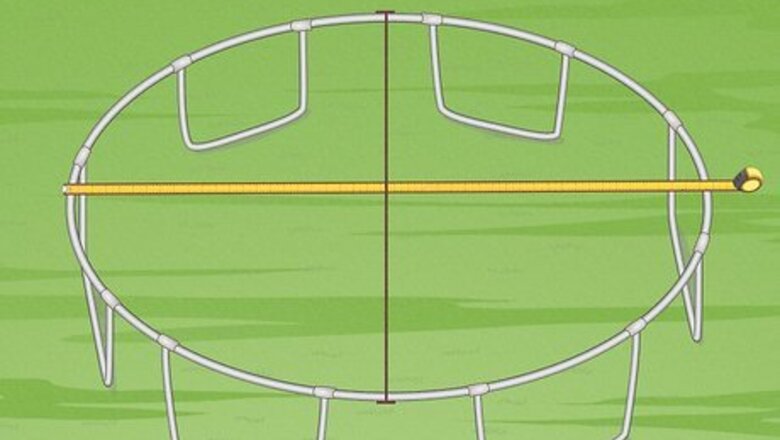
views
- For circular and square trampolines, measure the frame from one point on the outer metal frame to a point directly across from it on the opposite side.
- Take another measurement perpendicular to the first one, then take the average of both measurements.
- For rectangular and oval trampolines, measure the width and length separately. For octagonal trampolines, measure from opposite corner to opposite corner.
Measuring a Trampoline Frame
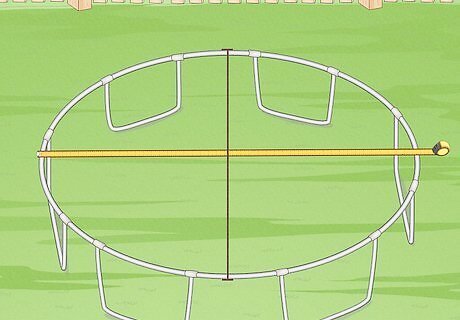
Circular frames Measure from one point on the outer metal frame (and not the inner jumping surface) to a point directly across on the opposite side. Record the distance, then measure across the trampoline again, this time perpendicular to the original line. Take the average of the two measurements. Take two measurements, just in case the frame is bent or the trampoline is on uneven ground. Trampolines are measured in whole feet or meters (10’ instead of 10’ 5”, 3m instead of 290cm).
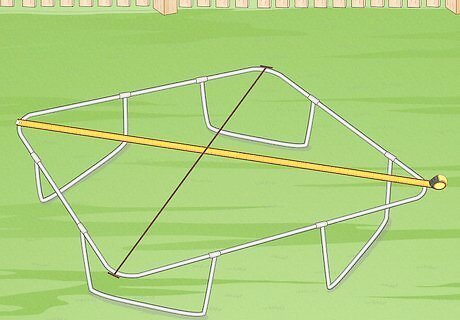
Square frames Measure along one side of the frame from corner to corner. Measure the other side (always starting from the outermost edge), then take the average of the two sides.
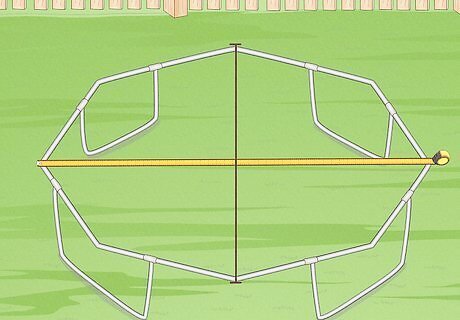
Octagonal frames Measure from one corner of the outer metal frame to the opposite corner (not from side to side!). Then, retake the measurement from the corners perpendicular to your original line. Take the average of the two measurements to get your trampoline’s size. There are 3 corners between each opposite corner and one corner between each perpendicular corner.

Rectangular and oval frames Measure the length (long side) of the outer metal frame, then measure the width (short side) of the frame. Always start at the furthest edge to be sure you get an accurate reading. Rectangular and oval trampolines are measured by width and length, so your trampoline size would be something like 10’x12’ or 3x4 meters. For oval trampolines, take a second to determine where the trampoline is at its longest and widest. Take the measurements a few times to be completely sure they’re accurate.
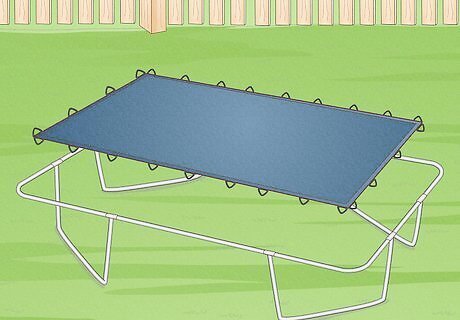
Look for spare parts that have the dimensions of the frame. Most spare parts for trampolines require the measurements of the frame. If you have a 10’x12’ (3x4 meter) rectangular frame, or a 10' circular frame, look for parts that match that measurement.
Measuring a Trampoline Mat and Safety Pad
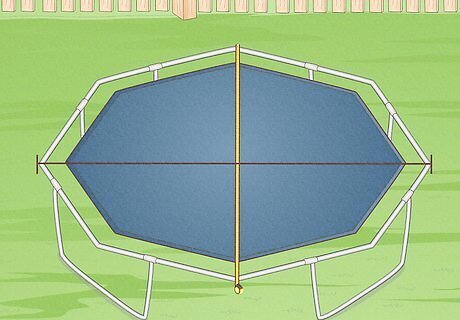
Measure the trampoline frame. Starting from the outer edge of the metal frame, measure the distance from side to side, then take the measurements again, this time starting perpendicular to your last measurement. Take the average of your measurements. For rectangular and oval frames, measure the length and width, but don’t take the average. For octagonal frames, measure from the corners, not the sides. Trampoline mats are sold by the size of the frame, not by the size of the mat.
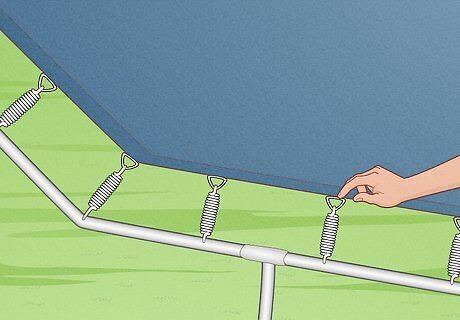
Count the number of v-rings. V-rings are the triangular rings in your mat that the springs hook into. Go around your trampoline and count how many you have. If you don’t have a mat, count the number of spring holes in the metal frame.

Measure a spring that is unconnected from the mat. Unhook a spring from the trampoline frame and mat and measure it from hook end to hook end. Make sure the spring is completely unstretched and not deformed. If you think your spring may be bent in any way, measure a few of them.
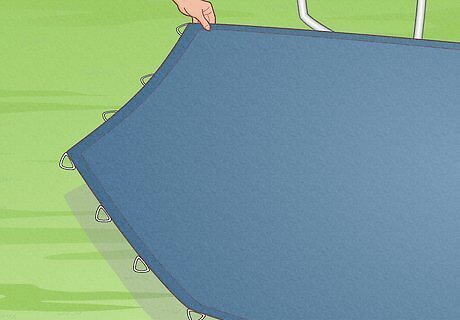
Use the measurements to find replacement parts. Replacement trampoline mats and safety pads are sold by frame size, v-ring count, and spring size. So if you have a 12’ (4m) trampoline with 50 v-rings and 5in (12cm) springs, look for mats or pads with those specifications.
Measuring for Enclosure Nets

Determine what kind of poles your enclosure uses if you already have one. There are 5 kinds of enclosure poles: straight poles (which are completely straight), straight curved poles (straight and then curved at the top), arched poles (that look like upside down U’s), curved poles (which are entirely curved), and top ring enclosures (a large ring supported by poles). Straight poles come in two varieties, one that holds the net on with a bolt, and the other that holes the net on with a ring or handle.
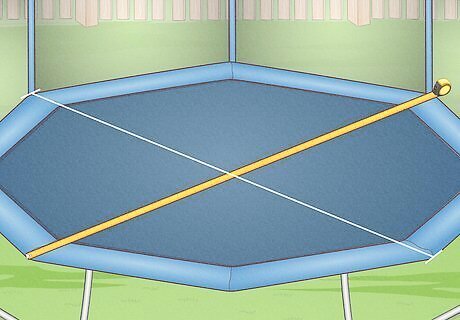
Measure the frame of your trampoline. Run a measuring tape from edge to edge of your metal frame, going directly across. Take the measurements again, this time perpendicular to where you first started. Take the average of the two measurements to determine the size of your frame. For rectangular and oval frames, measure across the widest part and the longest part of the trampoline. For octagonal frames, measure from one corner to the corner on the opposite side.
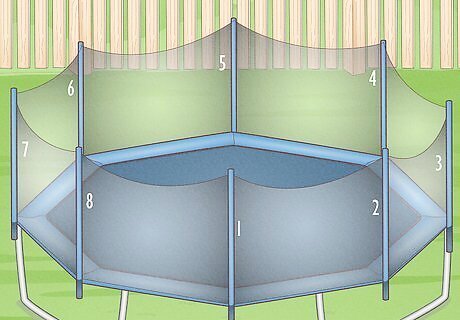
Count the number of safety poles or arches in your enclosure. Finally, count how many poles or arches your trampoline has. If you’re buying a new enclosure net, find one that fits your style of pole, size of frame, and number of poles you have.
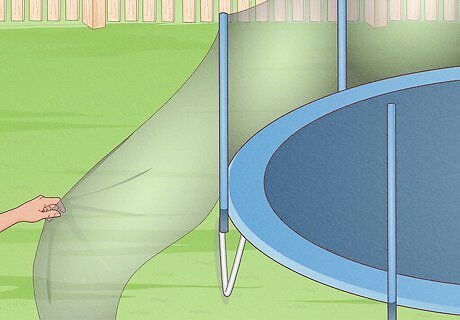
Buy replacement nets to fit the style of your poles. For example, if you have a top ring enclosure on a circular 12’ frame with 6 straight poles, look for products that say “top ring enclosure net for 6 straight pole 12’ round frames.”
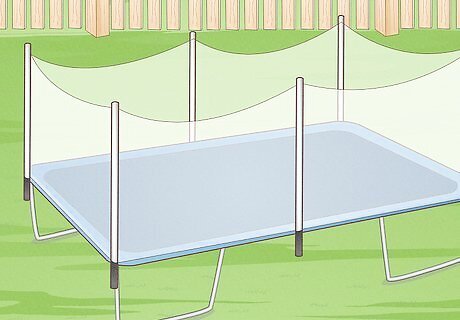
Buy an enclosure with a net plus poles if you don't have one yet. If the legs of your trampoline are completely straight and flush with the edge of the frame, buy an enclosure with the same number of poles as legs on your trampoline that fits its size and shape. If not, buy a universal enclosure that fits your frame. Check with your manufacturer to see which kinds of enclosures you can use with your trampoline.
Measuring Trampoline Enclosure Poles
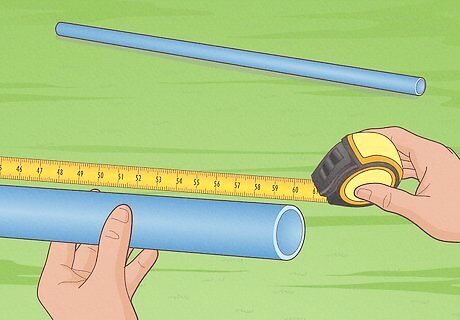
Determine the pole’s shape and measure its length. Remove one pole and compare it to the possible styles of enclosure poles: straight poles, straight curved poles (which are curved only at the top section), curved poles, or arches (which look like upside-down U’s). Measure the pole from end to end. If your enclosure has a ring that runs around the top of it, that’s called a “top ring” enclosure. If you have a straight curved pole, measure the part that’s straight and the part that’s curved separately. Some poles are sold based on total length, but some are sold based on the length of each part.
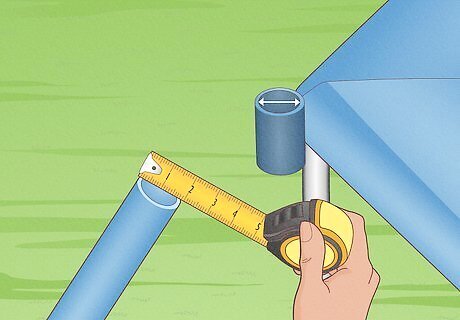
Measure the circumference of the poles and sockets. Measure the circumference somewhere along the pole, then measure it again where the pole goes into the socket. Some poles are smaller at the base in order to fit into the socket.
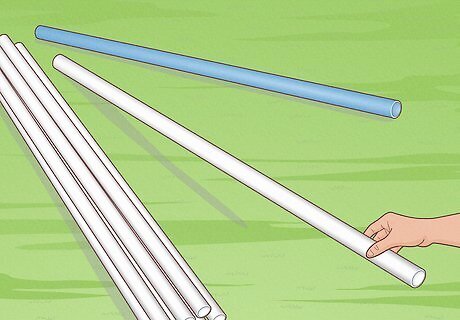
Buy replacement poles based on their shapes, lengths, and circumferences. Find a replacement pole that matches your enclosure by looking for ones with the same measurements. If you have a tapered end, check to be sure your replacement does, too.
Measuring Trampoline Springs
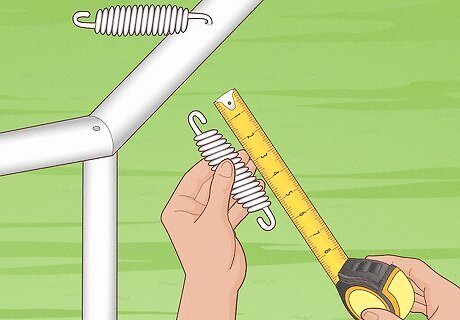
Remove a spring and measure it from hook to hook. Measure trampoline springs when they’re detached from the frame and the mat. Don’t measure a spring that’s bent or warped—if you’re worried that it may be deformed, take off and measure multiple springs. Trampoline springs mostly come in these lengths: 3.5 inches (8.9 cm) 4.75 inches (12.1 cm) 5.5 inches (14 cm) 6.5 inches (17 cm) 7 inches (18 cm) 8.5 inches (22 cm) 9 inches (23 cm) 10 inches (25 cm)




















Comments
0 comment